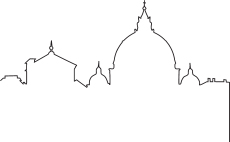
Notes and Acknowledgments
1 “The Exclusive Tour of Necropolis below St. Peter’s Basilica,” Travel + Style, March 26, 2015, http://www.travelplusstyle.com/magazine/vatican-top-secret-the-exclusive-tour-of-necropolis-below-st-peters-basilica (accessed April 25, 2017).
2 Caitlin Hurley, “How to score a coveted Scavi Tour of the Vatican Necropolis,” Boston Globe, February 15, 2014, https://www.bostonglobe.com/lifestyle/travel/2014/02/15/the-tip-how-score-coveted-scavi-tour-vatican-necropolis/9bMrpp2N76Q51ub9mnurAL/story.html (accessed April 25, 2017).
3 “The Exclusive Tour of Necropolis below St. Peter’s Basilica.”
4 “Vatican Prelate Visiting U.S. Praises Work of America’s Catholic Schools and Press,” The Bulletin of the Catholic Laymen’s Association of Georgia, September 22, 1951: 34. Available online at http://scr.stparchive.com/Archive/SCR/SCR09221951p34.php (accessed May 11, 2017).
5 Conversations with the Strake family.
6 “Cardinal Ratti New Pope as Pius XI,” New York Times, February 7, 1922, http://query.nytimes.com/mem/archive-free/pdf?res=9D02EED61130EE3ABC4F53DFB4668389639EDE (accessed July 18, 2017).
7 “Know Pio XI Glacier,” VisitChile.com, http://www.visitchile.com/en/pio-xi-glacier/ (accessed July 18, 2017).
8 Verlyn Klinkenborg, “The Power of Patagonia,” National Geographic magazine, February 2010, http://www.nationalgeographic.com/magazine/2010/02/patagonia-southern-chile-torres-del-paine/ (accessed July 18, 2017).
9 John Evangelist Walsh, The Bones of St. Peter (Manchester, NH: Sophia Institute Press, 1982), 10. (While Walsh’s account is a second-hand source, the information for his book came directly from Margherita Guarducci.)
10 Margherita Guarducci, The Tomb of St. Peter (New York: Hawthorn Books, 1960), available online at http://stpetersbasilica.info/Necropolis/MG/TheTombofStPeter-4.htm (accessed May 11, 2017).
11 Margherita Guarducci, Peter: The Rock on Which the Church Is Built (Rome, Italy: Rev. Fabbrica di S. Pietro in Vaticano, 1977), 15–16.
12 Lori Pieper, “A Christian Was Here,” On Pilgrimage (originally published in Catholic Digest, May 1992), http://subcreators.com/blog/a-christian-was-here-by-lori-pieper/ (accessed May 11, 2017).
13 “World’s earliest surviving Christian inscription identified,” CBS News, September 30, 2011, http://www.cbsnews.com/news/worlds-earliest-surviving-christian-inscription-identified/ (accessed August 2, 2017); and Teresa Neumann, “Extremely Rare First-Century Inscription Unearthed in Jerusalem,” Breaking Christian News, August 1, 2009, http://www.breakingchristiannews.com/articles/display_art.html?ID=7006 (accessed August 2, 2017).
14 Mary Beard, SPQR: A History of Ancient Rome (New York: Liveright, 2015), 518–19.
15 There are many writings relating to the discoveries and excavation. The best of these in English are the following little-known accounts: Margherita Guarducci, The Tomb of St. Peter and Peter: The Rock on Which the Church Is Built; and the official website of the Vatican on the Tomb of Peter, http://www.vatican.va/roman_curia/institutions_connected/uffscavi/documents/rc_ic_uffscavi_doc_gen-information_20090216_en.html; and popular accounts cited herein on aspects of the story.
16 Thomas J. Craughwell, St. Peter’s Bones (New York: Random House, LLC/Image, 2013), 95–99; Guarducci, The Tomb of St. Peter, 6.
17 Guarducci, The Tomb of St. Peter, 33–35 (citing Saint Ignatius of Antioch’s letter to the Christians of Rome in A.D. 110, “I do not command you as did Peter and Paul,” suggesting that Peter and Paul governed the Church in Rome), and 108; William Steuart McBirnie, Ph.D., The Search for the Twelve Apostles, Chapter III, Simon Peter (Carol Stream, IL: 1973); Daniel Iglesias, “San Pedro en el Vaticano. Las pruebas indiscutibles (Margherita Guarducci),” InfoCatolica, July 8, 2010, http://infocatolica.com/blog/razones.php/1008071230-san-pedro-en-el-vaticano-las (accessed May 11, 2017).
18 Margherita Guarducci, The Primacy of the Church of Rome (San Francisco, CA: Ignatius Press, 1991), 100–111.
19 Eric J. Lyman, “Margherita Guarducci — Are Those Really St. Peter’s Bones on Display at the Vatican?” Sojourners, December 5, 2013, http://sojo.net/articles/are-those-really-st-peter-s-bones-display-vatican (accessed July 21, 2016).
20 Guarducci, The Tomb of St. Peter, 62–63. (“It seemed better, all things considered, to respect the veil of prudent silence which the centuries had woven over St. Peter’s tomb and to leave intact in faithful minds a consoling though unproved certitude.”)
21 Ibid., 63.
22 Martin Luther, Against the Roman Papacy Instituted by the Devil (1545), in Erwin Mülhaupt, Luther’s Evangelien-Auslegung, II (1947), 551; Guarducci, The Tomb of St. Peter, 11; Father Georges de Nantes, “The Truth About the Saint Peter’s Tomb,” originally published in CCR, November 1999, pp. 6–12. Excerpts available at http://crc-internet.org/our-doctrine/catholic-counter-reformation/truth-saint-peter-tomb/ (accessed July 21, 2016).
23 The history of George Strake is recounted in various sources contemporary with his life, and afterward in part in sources such as: Bryan Burrough, The Big Rich: The Rise and Fall of the Greatest Texas Oil Fortunes (New York: Penguin Books, Ltd., 2010). Given his lifelong insistence on secrecy, the cooperation of his family — particularly his wonderful son, George Strake Jr. (a legend in his own right) — was extraordinarily helpful in documenting Strake’s amazing life and participation with Pius XII, Paul VI, Monsignor Walter Carroll, Father Ludwig Kaas, and Father Joseph McGeough.
24 Henry Ford and Samuel Crowther, My Life and Work (Garden City, NY: Garden City Publishing Company, Inc., 1922), 72.
25 “Petros,” Greek Names, https://www.greek-names.info/petros/ (accessed August 1, 2017).
26 Reza Aslan, No god but God: The Origins, Evolution, and Future of Islam (NY: Random House, 2005).
27 F. F. Bruce, New Testament History (New York: Doubleday, 1969), 410.
28 Martin Luther, Against the Roman Papacy Instituted by the Devil (Wittenberg, 1545), in E. Mulhaupt, Luther’s Evangelien-Anslagung, II (1947), 551; Guarducci, The Tomb of St. Peter, 11; Fr. Georges de Nantes, The Truth about the Saint Peter’s Tomb, crc-internet.org, The Catholic Counter-Reformation in the 21st Century (November 1999), 6–12, July 21, 2016, crc-internet.org/our-doctrine/catholic-counter-reformation/truth-saint-peter-tomb/ (accessed August 1, 2017).
29 “The Conspiracies of the Roman Emperor Nero,” (transcript), Prezi, July 11, 2011, https://prezi.com/p3luqn-z9xfc/the-conspiracies-of-the-roman-emperor-nero/ (accessed August 1, 2017).
30 Angelo Albani and Massimo Astrua, “¿Está enterrado realmente san Pedro en el Vaticano?” Aleteia, November 22, 2013, https://es.aleteia. org/2013/11/22/esta-enterrado-realmente-san-pedro-en-el-vaticano/ (accessed May 11, 2017) (“Is Peter Really Buried in the Vatican?”). Originally published in Italian at FlosCarmeli.net.
31 “Most estimates for Rome’s population seem to cluster around 1 million at its height (1st Century BC–2nd Century AD)…. No other Western city reached this size for 2000 years.” Gregory S. Aldrete, Daily Life in the Roman City: Rome, Pompeii and Ostia (Greenwood Publishing Group, 2004,) 22.
32 “The Burning of Rome, 64 AD,” eyewitnesstohistory.com (1999), http://www.eyewitnesstohistory.com/rome.htm (accessed October 3, 2016). Tacitus, describing the great fire wrote, “Terrified, shrieking women, helpless old and young, people intent on their own safety, people unselfishly supporting invalids or waiting for them, fugitives and lingerers alike — all heightened the confusion. When people looked back, menacing flames sprang up before them or outflanked them. When they escaped to a neighboring quarter, the fire followed — even districts believed remote proved to be involved.”
33 Guarducci, The Tomb of St. Peter, 31.
34 John Curran, “The Bones of Saint Peter?” Classics Ireland, Vol. 3 (Classical Association of Ireland, 1996), 2.
35 Guarducci, The Tomb of St. Peter, 47; Pietro Zander, The Necropolis under St. Peter’s Basilica in the Vatican (Rome, Italy: Fabbrica di San Pietro, 2009), 10.
36 Guarducci, Peter:The Rock on Which the Church Is Built, 8.
37 Ibid. and The Tomb of St. Peter, 31; Walsh, The Bones of St. Peter, 36.
38 Zander, The Necropolis under St. Peter’s Basilica in the Vatican, 10.
39 Aubrey Menen, “St. Peter’s,” National Geographic (December 1971), 872. Print. See also “The Bones of St. Peter,” The Angelus Online, February 2015, http://www.angelusonline.org/index.php?section=articles&subsection=show_article&article_id=3656 (accessed May 11, 2017), referring to Gaius’s dialogue repeated in Eusebuis, Historia Ecclesiastica, II.25.7, available at http://www.newadvent.org/fathers/250102.htm (accessed May 11, 2017); Guarducci, Peter: The Rock on Which the Church Is Built, 8.
40 Michele Basso, Guide to the Vatican Necropolis (Rome, Italy: Fabbrica di San Pietro, 1986), 8.
41 Guarducci, The Tomb of St. Peter, 38; Pieper, “A Christian Was Here”; Basso, Guide to the Vatican Necropolis, 8.
42 Pieper, “A Christian Was Here.”
43 Guarducci, The Tomb of St. Peter, 124; The Seminarian Guides, North American College, “St. Peter’s Basilica,” www.stpetersbasilica.info/Docs/seminarians2.htm (accessed October 3, 2016).
44 David F. Wright, “313 The Edict of Milan,” Christianity Today, Issue 28: 100, http://www.christianitytoday.com/history/issues/issue-28/313-edict-of-milan.html (accessed May 12, 2017).
45 Guarducci, The Tomb of St. Peter, 79.
46 Ibid., 64; and Peter: The Rock on Which the Church Is Built, 11.
47 Guarducci, The Tomb of St. Peter, 54.
48 Thomas Babington Macaulay, “Horatius at the Bridge,” in Bliss Carman et al., eds., The World’s Best Poetry Vol. VII, Descriptive: Narrative, 1904, www.bartleby.com/360/7/158.html (accessed July 21, 2016).
49 Richard Cavendish, “The Visigoths Sack Rome,” History Today, August 8, 2010, http://www.historytoday.com/richard-cavendish/visigoths-sack-rome (accessed October 3, 2016); and Umberto Leoni and Giovanni Staderini, On the Appian Way: A Walk from Rome to Albano (Rome: R. Bemporad, 1907), 20–22.
50 Margherita Guarducci, “The Necropolis under the Basilica,” in The Tomb of St. Peter (Hawthorn Books, 1960), www.stpetersbasilica.info/Necropolis/MG/TheTombofStPeter-4.htm.
51 Guarducci, The Tomb of St. Peter, 60.
52 Guarducci, Peter:The Rock on Which the Church Is Built, 23; and The Tomb of St. Peter, 62.
53 Indianapolis Museum of Art, “Funerary Monument of Flavius Agricola,” http://collection.imamuseum.org/artwork/31732/ (accessed May 12, 2017).
54 McBirnie, The Search for the Twelve Apostles, 35. (Challenging Luther’s speculation, McBirnie writes, “Christian tradition has been in agreement from the earliest times that Peter died in Rome.”)
55 King James II was the last Stuart King of England — also the last Catholic king.
56 Christina’s story is itself extraordinary. She arguably ranks with Elizabeth I of England, Maria Theresa of Austria, and Catherine of Russia among the most powerful women of her age.
57 Guarducci, The Tomb of St. Peter, 63.
58 Guarducci, Peter:The Rock on Which the Church Is Built, 15; and The Tomb of St. Peter, 72; Walsh, The Bones of St. Peter, 11–12.
59 “Dormit in pace” is an early form of the later Latin requiescat in pace (“may he/she rest in peace”), in wide Christian use from earliest times. See “Necropolis (Scavi) Tomb F: The First Tomb of the Caetennii,” http://stpetersbasilica.info/Necropolis/TombF.htm (accessed May 12, 2017).
60 School Essay of Eugenio Pacelli to Professor Ignazio Bassi, 1889, cited in “Early Life of Pope Pius XII,” Wikipedia (citing Ilse Lore Konopatzki, Eugenio Pacelli: Pius XII. Kindheit und Jugend, 1974), en.wikipedia.org/wiki/Early_life_of_Pope_Pius_XII#cite_note-8 (accessed July 21, 2016).
61 Fr. George W. Rutler, “The Tragic Heroism of Pope Pius XII,” in Crisis magazine, October 22, 2012, www.crisismagazine.com/2012/the-tragic-heroism-of-pope-pius-xii (accessed July 21, 2016).
62 Robert Murphy, Diplomat Among Warriors (Garden City, NY: Double Day, 1964), 205.
63 James Akin, “How Pius XII Protected Jews,” Catholic Answers, May 16, 2016. https://www.catholic.com/magazine/print-edition/how-pius-xii-protected-jews (accessed May 9, 2017).
64 Rabbi Lapide, quoted in Jimmy Akin, “How Pius XII Protected Jews,” Catholic Answers, May 16, 2016, https://www.catholic.com/magazine/print-edition/how-pius-xii-protected-jews (accessed July 18, 2017).
65 Pope Pius XII, quoted in Joseph Bottum, “The End of the Pius Wars,” First Things magazine, April 2004, https://www.firstthings.com/article/2004/04/001-the-end-of-the-pius-wars (accessed May 9, 2017).
66 Curran, “The Bones of Saint Peter?” 5.
67 Thomas J. Craughwell, St. Peter’s Bones (New York: Image, 2013), 2.
68 Lizzy Davies, “Saint Peter’s Bones: Vatican Exhumes Old Argument with Plan to Show ‘Relics,’” The Guardian, November 18, 2013; Tom Mueller, “Inside Job,” The Atlantic, October 2003, https://www.theatlantic.com/magazine/archive/2003/10/inside-job/302801/ (accessed July 21, 2016).
69 Walsh, The Bones of St. Peter, 78; Mueller, “Inside Job.”
70 “March 18th 1970 — Kirschbaum Engelbert,” http://www.conspiration.de/syre/english/mar/e0328.html (accessed July 18, 2017); and Obituary of Engelbert Kirschbaum, March 28, 1970, www.con-spiration.de/syre/english/mar/e0328.html (accessed July 21, 2016).
71 Michael Labahn and Bert Jan Lietaert Peerbolte, Wonders Never Cease: The Purpose of Narrating Miracle Stories in the New Testament and Its Religious Environment (London: T&T Clark International, 2006), 27.
72 Guarducci, The Tomb of St. Peter, 41; Craughwell, St. Peter’s Bones, 38; “The Bones of St. Peter,” Angelusonline.org; and “Dedication of the Churches of St. Peter and St. Paul at Rome,” Feast: November 18, EWTN, https://www.ewtn.com/library/MARY/PETEPAUL.HTM (accessed August 2, 2017).
73 Guarducci, The Tomb of St. Peter, 88.
74 Louise Ropes Loomis, trans., The Book of the Popes (Liber Pontificalis) (New York: Columbia University Press, 1916).
75 Ibid., 72.
76 Guarducci, The Tomb of St. Peter, 64.
77 “Was St. Peter in Rome?” Catholic Apologetics Information, www.catholicapologetics.info/apologetics/general/rome.htm (accessed October 3, 2016).
78 Ibid.
79 Walsh, The Bones of St. Peter, 17–19; Dan Burstein and Arne de Keijzer, Inside Angels & Demons: The Unauthorized Guide to the International Best Seller (New York: Vanguard Press, 2004), 52.
80 Guarducci, The Tomb of St. Peter, 69–70.
81 Ibid., 70–73; Walsh, The Bones of St. Peter, 19–23.
82 Guarducci, The Tomb of St. Peter, 146.
83 Ibid., 142–43, 147.
84 Curran, “The Bones of Saint Peter?” 6.
85 Ibid., 10; Davies, “Saint Peter’s Bones.”
86 Guarducci, The Tomb of St. Peter, 74.
87 Walsh, The Bones of St. Peter, 24 (depicting the Rape of Persephone).
88 Guarducci, The Tomb of St. Peter, 74.
89 Walsh, The Bones of St. Peter, 25–26.
90 Guarducci, Peter, 13; and The Tomb of St. Peter, 91.
91 Guarducci, The Tomb of St. Peter, 90–91.
92 “The Bones of St. Peter” (referring to Gaius’s letter repeated in Eusebuis’s Historia Ecclesiastica, II 25, 7), Angelusonline.org.
93 Guarducci, The Tomb of St. Peter, 183; and Peter, 26; Iglesias, “San Pedro en el Vaticano. Las pruebas indiscutibles (Margherita Guarducci).”
94 Guarducci, “La verità della tomba di san Pietro,” Liturgia della Domenica, originally published in Tracce. Litterae Communionis, XXVI, October 1999, pp. 72–77, http://liturgiadomenicale.blogspot.com/2008/06/margherita-guarducci-la-verit-della.html (accessed May 12, 2017).
95 Guarducci, The Tomb of St. Peter, 183. The excavators would find four altars built under the high altar of St. Peter’s and above a dirt grave dug during the first century: In descending order: (1) the altar of Clement VIII (1592–1605); (2) the altar of Callistus II (1119–1124); (3) the altar of St. Gregory the Great (590–604); and (4) the shrine identified with the Troparion of Gaius (about A.D. 160).
96 Ibid., 81.
97 Ibid., 132.
98 Mueller, “Inside Job.”
99 Thomas J. Craughwell, “Relics of the Church’s first pontiff finally on display,” OSV Newsweekly, November 21, 2013, https://www.osv.com/OSVNewsweekly/Faith/Article/TabId/720/ArtMID/13628/ArticleID/13458/Relics-of-the-Church%E2%80%99s-first-pontiff-finally-on-display.aspx (accessed May 12, 2017).
100 Zander, The Necropolis under St. Peter’s Basilica in the Vatican, 114–15.
101 Guarducci, The Tomb of St. Peter, 88.
102 Ibid.
103 Interestingly, Gaius and others called it a “tropaia” — trophy. See Guarducci, The Tomb of St. Peter, 41. It was to mark Peter’s victory: gaining eternal life through faith — not sadness over one crucified as a common criminal.
104 Guarducci, The Tomb of St. Peter, 88.
105 Curran, “The Bones of St. Peter?” 12.
106 Guarducci, Peter, 24.
107 “Secret Life of Msgr. Carroll,” The Voice, November 25, 1983, p. 8.
108 Craughwell, St. Peter’s Bones, 61. (“According to Israeli diplomat, historian, and theologian Pinchas Lapide, Pope Pius had thousands of Jews concealed in monasteries, convents, and churches across Rome, with as many as three thousand sheltering in Castel Gandolfo, the pope’s summer residence.”) See also William Doino Jr., “Yad Vashem Honors Cardinal Who Fought for Jewish Lives,” First Things, December 29, 2012, https://www.firstthings.com/blogs/firstthoughts/2012/12/yad-vashem-honors-cardinal-for-sheltering-jews (accessed July 21, 2016). This article references Popes Pius XI and Pius XII as being special defenders of the Jewish population during WWII.
109 Sacred Heart Church, Pittsburgh, The Monsignor Walter S. Carroll Memorial Bell Tower (1934), 19–20; John Franko, “Future pope visited Pittsburgh,” Catholic Diocese of Pittsburgh, October 17, 2014, http://www.dioceseofpgh.org/pittsburgh-catholic/future-pope-visited-pittsburgh (accessed May 12, 2017).
110 “By 1942, with the increased wartime demand for crude, production rose, and by 1944 crude yields soared to an all-time annual high of 23,207,917 barrels of oil as gas production surged to 2,930,385,000 cubic feet.” “Conroe Oilfield,” Texas State Historical Association, https://tshaonline.org/handbook/online/articles/doc02 (accessed July 18, 2017).
111 “Secret Life of Msgr. Carroll,” 8.
112 A few surviving statements from a Pittsburgh area bank show Father Carroll’s use of at least one account there for Rome projects during the last two years of WWII through the end of 1949. While clearly from a U.S. source with substantial resources, no records could be found identifying the source of the funding of these accounts.
113 Sylvia Hart, “Priest aided Allies as spy in World War II, according to recently revealed papers,” Mobile Christian-Jewish Dialogue, March 10, 1984, mobilecjdialogue.org/archive1/B_0139.pdf (accessed July 27, 2016).
114 “Giovanni Montini was no stranger to American intelligence. During World War II, he worked in the Office of the Papal Secretariat and passed information to a grateful OSS.” In Martin A. Lee, “Their Will Be Done,” Mother Jones, July/August 1983, www.motherjones.com/politics/1983/07/their-will-be-done (accessed July 21, 2016).
115 Mrs. Anna B. Crow, “Professor Kemon, guest speaker at Jewish-Christian dialogue,” February 24, 1984, http://mobilecjdialogue.org/archive1/B_0140.pdf (accessed July 18, 2017).
116 “Bombshell Diaries Opened, Vatican priest’s diaries in Miami show Jews aided,” The Voice, October 8, 1982, p. 6.
117 Franko, “Future pope visited Pittsburgh.”
118 “Secret Life of Msgr. Carroll,” 8; “Casa O’Toole: A History of the Villa that has become an integral part of the Pontifical North American College,” Pontifical North American College Magazine (Summer 2008), p. 12. Print. Available online at https://issuu.com/pnac/docs/summer2008 (accessed May 12, 2017).
119 “Bombshell Diaries Opened,” 6.
120 Ibid., 1, 6.
121 “Casa O’Toole,” 12. This remains a project of the Strake Foundation.
122 Burke Walsh, “Jews Call Pius XII ‘Our Pope,’” The Guardian, July 1944, p. 7, available online at arc.stparchive.com/Archive/ARC/ARC07071944p01.php (accessed May 12, 2017); “Bombshell Diaries Opened,” 6.
123 Joe Carroll, “The Kerry Monsignor Who Defied the Nazis,” The Irish Times, April 5, 2008, www.irishtimes.com/news/the-kerry-monsignor-who-defied-the-nazis-1.910330 (accessed August 24, 2016).
124 “Secret Life of Msgr. Carroll,” 8; Doino, “Yad Vashem Honors Cardinal,” 1–3; Franko, “Future pope visited Pittsburgh.”
125 “Secret Life of Msgr. Carroll,” 8; The Monsignor Walter S. Carroll Memorial Bell Tower, 23.
126 The Monsignor Walter S. Carroll Memorial Bell Tower, 32–33.
127 Hart, “Priest aided Allies as spy in World War II.”
128 Ibid. (citing George Kemon from Walter Carroll’s diary).
129 James Walsh, “Future Pope, 3 Americans Halted Red Tide in Rome,” The Voice, June 28, 1963, p. 9.
130 “ITALY: Fateful Day,” TIME magazine, March 22, 1948, http://content.time.com/time/magazine/article/0,9171,804484,00.html (accessed December 13, 2017).
131 Walsh, “Future Pope, 3 Americans Halted Red Tide in Rome.”
132 “St. Peter’s Alleged Bones Carry ‘Curse’ but Draw Crowds,” Doubtful News, November 15, 2013, doubtfulnews.com/2013/11/st-peters-bones-carry-curse-and-draw-the-crowds/ (accessed July 21, 2016); “Dossier: The Tomb of St Peter, digilander.libero.it/nousland/The%20real%20Peter’s%20Tomb.html (accessed July 21, 2016).
133 Doyle Murphy, “St. Peter’s bones displayed,” New York Daily News, November 24, 2013, http://www.nydailynews.com/news/world/vatican-bones-st-peter-article-1.1527537 (accessed July 18, 2017).
134 Epigraph of William Shakespeare’s Tombstone, “William Shakespeare,” Poets’ Graves, http://www.poetsgraves.co.uk/shakespeare.htm (accessed May 12, 2017).
135 Walsh, The Bones of St. Peter, 52–53 (see image 3), 83, and 118.
136 Ibid.; J. J. Benitez, “Dos Pedros y una Petra,” JJBenitez.com, http://www.planetabenitez.com/IOI/historias22.htm (accessed May 3, 2017).
137 Angelus A. DeMarco, The Tomb of St. Peter: A Representative and Annotated Bibilography of the Excavations (Leiden, Netherlands: E. J. Brill, 1964), 163.
138 “Bombshell Diaries Opened,” 1 & 6 (quoting Carroll’s biographer, George Kemon).
139 The Monsignor Walter S. Carroll Memorial Bell Tower, 24–33; Franko, “Future pope visited Pittsburgh.”
140 “Pope Paul VI Visited U.S. Twice, Has Deep Interest in Church Here,” The Voice (5), June 28, 1963, pp. 1–2.
141 Franko, “Future pope visited Pittsburgh.”
142 Andria De Stefano and Ann Rodgers, “Pittsburgh priest had role in liberation of Rome in 1944,” Pittsburgh Catholic, June 7, 2016, www.pittsburghcatholic.org/News/Pittsburgh-priest-had-role-in-liberation-of-Rome-in-1944--15161412 (accessed August 24, 2016); Franko, “Future pope visited Pittsburgh”; and Jeff Ostrowski, “The Popes and Bishop Rene H. Gracida,” Views from the Choir Loft, September 23, 2013, http://www.ccwatershed.org/blog/2013/sep/23/bishop-rene-h-gracida-popes/ (accessed July 18, 2017).
143 Margherita Guarducci, The Primacy of the Church of Rome. Guarducci was a professor at La Sapienza di Roma University and member of various academies, including the British Academy and the Accademia dei Lincei.
144 Donald Haggis and Carla Anonaccio, Classical Archeology in Context:Theory and Practice in Excavation in the Greek World (Berlin/Boston: Walter de Gruyter GmbH & Co. KG, 2015), 31.
145 Lorenzo Bianchi, “A Life in the Footsteps of Peter,” 30Days, September 1999.
146 Paul Risso, Quanti Sono: I Siti Catholic on Italia, November 12, 2009.
147 Kenneth W. Harl, Great Ancient Civilizations of Asia Minor (Chantilly, Virginia: The Great Courses, 2013), Lecture No. 6. Audiobook. See also Sam Dickson, “German businessman, blew up 9 levels of archaeological remains with dynamite, including the level that is believed to be the historical Troy,” Vintage News, May 10, 2016, https://www.thevintagenews.com/2016/05/10/german-businessman-blew-up-9-levels-of-archaeological-remains-with-dynamite-including-the-level-that-is-believed-to-be-the-historical-troy/ (accessed July 18, 2017);
148 Salvatore Vicario, “Margherita Guarducci,” Wall Street International, June 25, 2015, wsimag.com/it/cultura/16101-marherita-guarducci (accessed July 21, 2016).
149 Iglesias, “San Pedro en el Vaticano. Las pruebas indiscutibles (Margherita Guarducci),” 8.
150 Walsh, The Bones of St. Peter, 86; Burstein, 53; John Thavis, The Vatican Diaries: A Behind-the-Scenes Look at the Power, Personalities and Politics at the Heart of the Catholic Church (New York: Penguin Group (USA), Inc. 2013), 136.
151 Walsh, The Bones of St. Peter, 86.
152 Obituary of Father Engelbert Kirschbaum, March 28, 1970, http://www.con-spiration.de/syre/english/mar/e0328.html (accessed October 6, 2016).
153 Nantes, “The Truth about the Saint Peter’s Tomb”; Thavis, The Vatican Diaries.
154 Pina Baglioni, “‘Peter is Here’ An Adventure in the Vatican Grottoes,” Traces, n. 11, January 12, 2013, archivio.traces-cl.com/2013/12/peterihere.html (accessed July 21, 2016).
155 Guarducci, Peter, 34; Angelo Albani and Massimo Astrua, “¿Está enterrado realmente san Pedro en el Vaticano?”; and Eyder Peralta, “Vatican Puts St. Peter’s Bones on Display for the First Time,” NPR, November 24, 2013, http://www.npr.org/sections/thetwo-way/2013/11/24/247027889/vatican-puts-bones-of-st-peter-on-display-for-the-first-time (accessed July 18, 2017).
156 Mueller, “Inside Job.”
157 “The battle over the bones, which pits a rigorous Jesuit archaeologist against a pioneering female epigraphist, is one of the strangest stories to have come out of the Vatican during the 20th century and may also be one of the least dignified.” In Davies, “Saint Peter’s bones: Vatican exhumes old argument with plan to show ‘relics,’” The Guardian, November 18, 2013; Curran, “The Bones of Saint Peter?” 1; Salvatore Izzo, “L’Ossservatore Romano recalls the dispute over the bones of St. Peter,” Papa Ratzinger blog, July 20, 2012, http://paparatzinger5blograffaella.blogspot. it/2012/07/losservatore-romano-ricorda-la-disputa.html (accessed May 12, 2017); John Curran, “The Rev Antonio Ferrua,” Independent, August 3, 2003, www.independent.co.uk/news/obituaries/the-rev-antonio-ferrua-36872.html (accessed May 12, 2017); Mueller, “Inside Job.”
158 Curran, “The Bones of Saint Peter?”; McBirnie, The Search for the Twelve Apostles.
159 Thavis, The Vatican Diaries; Menen, “St. Peter’s,” 874.
160 Guarducci, Peter, 33; and The Tomb of St. Peter, 123.
161 Guarducci, The Tomb of St. Peter, 100.
162 Ibid., 102–47.
163 Ibid., 90–103.
164 Luis Español Bouché “Margherita Guarducci: buscando a San Pedro,” ReligiónenLibertad, December 22, 2012, http://www.religionenlibertad.com/margherita-guarducci-buscando-a-san-pedro-26653.htm (accessed May 12, 2017); Guarducci, The Tomb of St. Peter.
165 Guarducci, The Tomb of St. Peter, 94–95.
166 Ibid., 94.
167 Paolo Risso, “Margherita Guarducci,” Santi Beati, December 11, 2009, http://www.santiebeati.it/dettaglio/95086 (accessed May 12, 2017).
168 Nantes, “The Truth about the Saint Peter’s Tomb.”
169 Guarducci, The Tomb of St. Peter, 135.
170 Curran, “The Bones of St. Peter?” 10.
171 Walsh, The Bones of St. Peter, 101.
172 Curran, “The Bones of St. Peter?” 9; Fr. Roger J. Landry, “Hidden Treasure,” CatholiCity, May 2, 2008, www.catholicity.com/commentary/landry/00644.html (July 21, 2016).
173 Menen, “St. Peter’s,” 872.
174 Craughwell, St. Peter’s Bones, 84.
175 Craughwell, St. Peter’s Bones, 85.
176 Walsh, The Bones of St. Peter, 107; Baglioni, “‘Peter is Here’: An Adventure in the Vatican Grottoes”; Guarducci, The Tomb of St. Peter.
177 Menen, “St. Peter’s,” 874.
178 Baglioni, “‘Peter is Here’ An Adventure in the Vatican Grottoes,” 2.
179 Nantes, “The Truth about the Saint Peter’s Tomb.”
180 Iglesias, “San Pedro en el Vaticano. Las pruebas indiscutibles (Margherita Guarducci).”
181 Bouché, “Margherita Guarducci: buscando a San Pedro.”
182 “We can now say that in the investigation of St. Peter’s tomb Science has come to the aid of Faith. This happy alliance has placed on age-old tradition a strengthened and renewed seal of irrefutable Truth.” In Guarducci, The Tomb of St. Peter, 183; Nantes, “The Truth about the Saint Peter’s Tomb.” See also Walsh, The Bones of St. Peter, 119.
183 Benitez, “Dos Pedros y una Petra.”
184 Eric J. Lyman, “St. Peter’s Bones Fake? Questions Raised about Authenticity of Vatican Relics,” Huffington Post, December 5, 2013, pp. 1–2, available online at http://www.huffingtonpost.com/2013/12/05/st-peters-bones-fake_n_4393739.html (accessed May 12, 2017); Davies, “Saint Peter’s bones: Vatican exhumes old argument with plan to show ‘relics’” (citing John Thavis, The Vatican Diaries, referring to the excavations as “an embarrassment” for the Church); “Petrus Romanus Pope Francis Perpetuates the Petrine Ploy,” Logos Apologia, April 2, 2013, www.logosapologia.org/petrus-romanus-pope-francis-perpetuates-the-petrine-ploy/ (accessed July 21, 2016); “Dem Bones, Dem Bones, Dem Dry Bones,” Frankincense and Mirth, November 30, 2013, www.frankincenseandmirth.com/tag/turkey (accessed July 21, 2016); “Pius XII Announced Discovery of Peter’s Tomb,” Christianity.com, www.christianity.com/church/church-history/timeline/1901-2000/pius-xii-announced-discovery-of-peters-tomb-11630802.html (accessed July 21, 2016).
185 Benitez, “Dos Pedros y una Petra.”
186 Craughwell, St. Peter’s Tomb, 99–100; Mueller, “Inside Job,” 6.
187 Mueller, “Inside Job.”
188 Guarducci, The Tomb of St. Peter, 172; Edgar R. Smothers, S.J., “The Excavations under Saint Peter’s,” Theological Studies, Inc. for the Theological Faculties of the Society of Jesus in the United States, Vol. 17 No. 3. September 1956, cdn.theologicalstudies.net/27/27.1/27.1.4.pdf (accessed July 27, 2016); Lyman, “St. Peter’s Bones Fake?”
189 Guarducci, Peter, 41.
190 Benitez, “Dos Pedros y una Petra.”
191 Eyder Peralta, “Vatican Puts St. Peter’s Bones on Display for the First Time”; Lyman, “St. Peter’s Bones Fake?”, citing Lorenzo Bianchi, a leading archaeologist and expert on Church relics, “There are many ways to verify and I suppose there is no way to be 100 percent sure, but from circumstances and records, we can say some specific things about these bones: that they were buried there some time between 114 and 120 AD, that Constantine believed them to be authentic, that other records seem to support that. I think we can be as certain as we can reasonably expect to be about this.”
192 “The Rev Antonio Ferrua,” Telegraph, May 29, 2003, www.telegraph.co.uk/news/obituaries/1431338/The-Rev-Antonio-Ferrua.html (accessed July 21, 2016).
193 Craughwell, St. Peter’s Bones, 81.
194 In 1957, Strake was included on Forbes’ list of fifty richest Americans. In 1966, he was picked by Life magazine as the largest U.S. philanthropist. These were both honors he would have happily declined, if possible.
195 Menen, “St. Peter’s.”
196 Epigraph on Secundula’s Tomb.
197 Regina Lee Gee, “The Vatican Necropolis: Ritual, Status and Social Identity in the Roman Chamber Tomb” (Ph.D. dissertation, the University of Texas at Austin, August 2003), p. 175.
198 Ibid., 178–83.
199 Ibid., 132.
200 Ibid., 144–45.
201 Alfred Lord Tennyson, “Ulysses,” available at Poetry Foundation, poetryfoundation.org/poems-and-poets/poems/detail/45392 (accessed July 21, 2016).
202 Tom Mueller, “Inside Job,” The Atlantic, October 2003, https://www.theatlantic.com/magazine/archive/2003/10/inside-job/302801/ (accessed August 2, 2017).
203 The author toured the Necropolis in 2005. There was no mention of either Guarducci or the inscriptions by the guide.
204 Thavis, The Vatican Diaries.
205 Mueller, “Inside Job.”
206 Molly Brown, builder of the Brown Palace in Denver, was famous for forcing her lifeboat back at gunpoint to rescue passengers of the Titanic from the freezing ocean. Annie Taylor, who could not swim, is famous for her 1901 trip over Niagara Falls in a barrel.
207 Benitez, “Dos Pedros y una Petra.”
208 Walsh, The Bones of St. Peter.
209 Tom Mueller, “Inside Job,” The Atlantic, October 2003, www.theatlantic.com/magazine/archive/2003/10/inside-job/302801 (accessed July 18, 2017).
210 Landry, “Hidden Treasure.”
211 Archaelogical Institute of America, “Who Made the Praeneste Fibula?” Archaeology, 2009, archive.archaeology.org/online/features/hoaxes/praeneste_fibula.html (accessed July 21, 2016); Arthur E. Gordon, “Review: La cosiddetta Fibula Prenestina. Antiquari, eruditi e falsari nella Roma dell’ Ottocento by Margherita Guarducci,” The Classical Journal, vol. 78, no. 1 (October–November, 1982), pp. 64–70, available online at www.jstor.org/stable/3297269?seq=1 (accessed July 21, 2016).
212 Vicario, “Margherita Guarducci.”
213 Margherita Guarducci, The Primacy of the Church of Rome, 93–101.
214 Zenit Staff, “Papal Address in Czestochowa: ‘Place Yourselves in the School of Mary,’” Zenit, May 26, 2006, https://zenit.org/articles/papal-address-in-czestochowa/ (accessed May 4, 2017).
215 “Pope Francis prays at the Black Madonna of Czestochowa,” Rome Reports, July 28, 2016, http://www.romereports.com/2016/07/28/pope-francis-prays-at-the-black-madonna-of-czestochowa (accessed May 4, 2017).
216 “Montevergine: Madonna di Montevergine,” www.interfaithmary.net/pages/Montevergine.htm (accessed July 21, 2016).
217 Guarducci, The Primacy of the Church of Rome, 93–107.
218 Ibid., 101–7.
219 “La profesora Guarducci ha sido un raro ejemplo de constancia, integridad y absoluta dedicación a la búsqueda de la verdad. Os lo repito, la profesora Guarducci habla como creyente, yo no soy creyente. Lo que no me impide expresarle mi alta admiración y suscribir hasta la última palabra todo lo que ha dicho.”
Translated: “The professor Guarducci was a rare example of perseverance, integrity and absolute dedication to the pursuit of truth. I repeat, the professor Guarducci speaks as a believer, I’m not a believer. This does not prevent me expressing my high admiration and [I] subscribe to the last word [to] everything you said.” In Castellotti, “El lugar del Primado.”
220 Zander, The Necropolis under St. Peter’s Basilica in the Vatican, 29.
221 “Pope: Basilica bones belong to apostle St. Paul,” CNN, June 29, 2009, http://www.cnn.com/2009/WORLD/europe/06/29/vatican.st.paul.bones/index.html?_s=PM:WORLD (accessed May 4, 2017).
222 Baglioni, “Peter Is Here.”
223 “The Ten Primitive Persecutions,” in Foxe’s Book of Martyrs, http://www.bibleprobe.com/10persecutions.htm (accessed July 18, 2017).
224 Thomas Gray, “Elegy Written in a Country Churchyard,” (1751), Thomas Gray Archive. http://www.thomasgray.org/cgi-bin/display.cgi?text=elcc (accessed September 22, 2016).
225 “The Tomb of Paul VI,” Vatican Grottoes, St. Peter’s Basilica Info, http://stpetersbasilica.info/Grottoes/Paul%20VI/Tomb%20of%20Paul%20VI.htm and https://w2.vatican.va/content/paul-vi/en/speeches/1978/august/documents/hf_p-vi_spe_19780810_testamento-paolo-vi.html (accessed August 2, 2017).
226 Bianchi, “A Life in the Footsteps of Peter.”
227 “Via Margherita Guarducci,” Nuove Strade, March 18, 2015, http://nuove-strade.it/lazio/roma/via-margherita-guarducci/ (May 12, 2017); “Vatican unveils the bones of St. Peter,” New York Post, November 24, 2013, nypost.com/2013/11/24/vatican-unveils-the-bones-of-st-peter/ (accessed May 12, 2017).
228 “The Exclusive Tour of Necropolis below St. Peter’s Basilica,” Travel+Style, http://www.travelplusstyle.com/magazine/vatican-top-secret-the-exclusive-tour-of-necropolis-below-st-peters-basilica (accessed May 12, 2017).
229 Zander, The Necropolis under St. Peter’s Basilica in the Vatican (citing Jesus’ prophecy in John 21:18 that Peter would die in old age through crucifixion: “When you were young, you girded yourself and walked where you would; but when you are old, you will stretch out your hands, and another will gird you and carry you where you do not wish to go.”).
230 Guarducci, Peter, 25–26; Landry, “Hidden Treasure.”
231 Guarducci, The Tomb of St. Peter, 94.
232 Jareen Imam, “Scientists to drill at site of dinosaur-killing asteroid crater,” CNN, March 4, 2016, www.cnn.com/2016/03/04/world/scientists-drill-impact-crater-irpt/index.html (accessed August 2, 2017); NASA released a high-res map showing the 112-mile-wide, 3,000-foot-deep crater, “‘Dinosaur-Killer’ Asteroid Crater Imaged for First Time,” National Geographic, March 7, 2003, www.news.nationalgeographic.com/news/2003/03/0307_030307_impactcrater.html (accessed August 2, 2017).
Scripture texts in this work are taken from the New American Bible, revised edition © 2010, 1991, 1986, 1970 Confraternity of Christian Doctrine, Washington, D.C., and are used by permission of the copyright owner. All rights reserved. No part of the New American Bible may be reproduced in any form without permission in writing from the copyright owner.
Photos used in this book are courtesy of the Strake family, the Our Sunday Visitor photo archives, Newscom, and Fabbrica di San Pietro, Vatican.
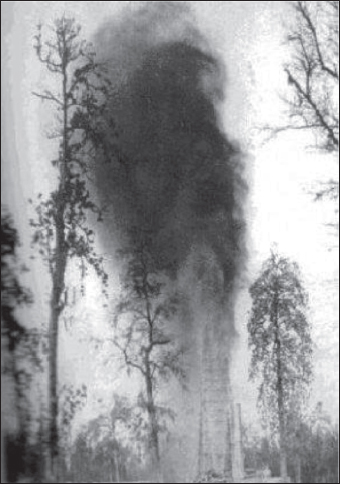
Explosion of the Conroe Field at Crater Hill, 1933
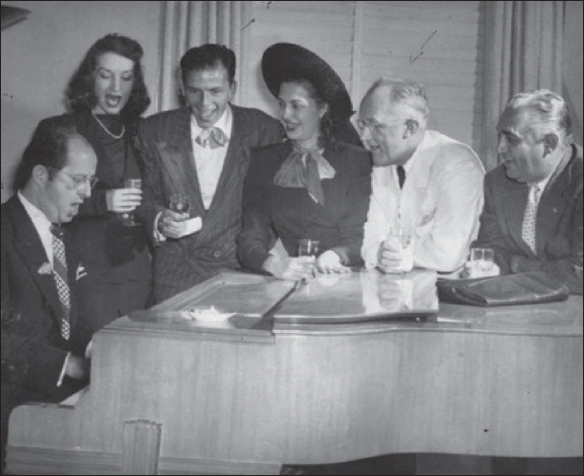
George Strake with Frank Sinatra, Phil Silvers, and Dorothy Lamour, 1951
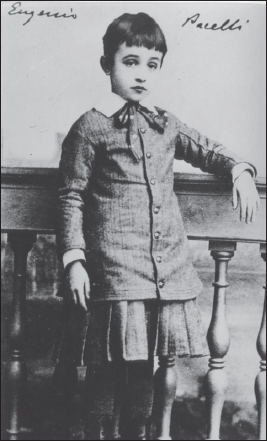
Eugenio Pacelli, the future Pope Pius XII, as a young boy
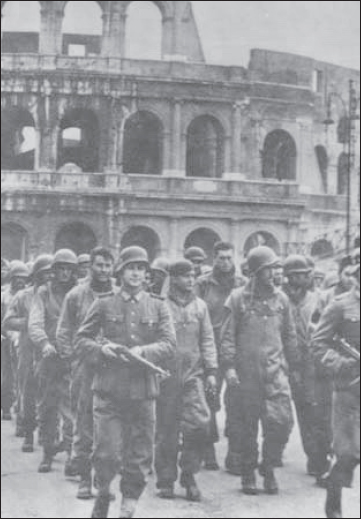
American prisoners of war from Anzio being paraded through Rome by the Nazi soldiers, c. 1944
Monsignor Walter Carroll (on the right) and Monsignor McGeough in the Vatican gardens, June 26, 1944. Credit: National Archives and Records Administration, College Park, MD - 111-C-2018
Monsignor Giovanni Battista Montini, the future Pope Paul VI, with Pope Pius XII, 1947. Credit: Religious News Service, OSV archive
U.S. General Mark Clark entered Rome in triumph on June 4, 1944. He stopped at the Vatican to greet Pope Pius XII. Shown here in St. Peter’s Square. Credit: Wikimedia Commons
Margherita Guarducci shows a photograph of the niche in the wall where the bones believed to be the Apostle Peter’s were originally found. Credit: Religious News Service, OSV archive
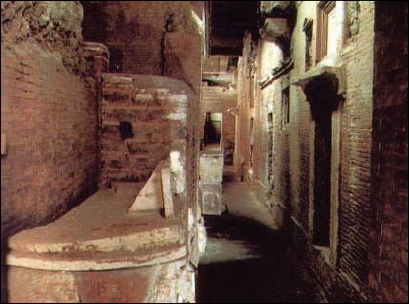
Vatican Necropolis, dirt road that runs between the tombs under the Vatican. Credit: courtesy of Fabbrica di San Pietro, Vatican
Fragment of the Red Wall bearing inscriptions decoded by Margherita Guarducci, revealing the location of the Apostle Peter. The graffiti on this fragment reads “Petros eni.” Credit: Courtesy of Fabbrica di San Pietro, Vatican
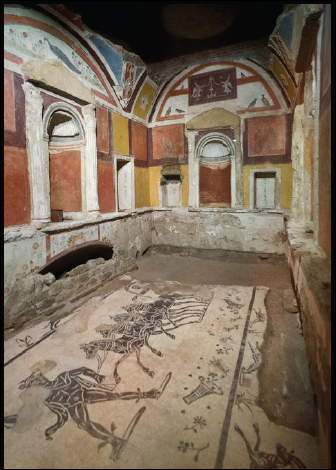
Roman tomb discovered beneath the Vatican known as the Tomb of the Chariot. Credit: Courtesy of Fabbrica di San Pietro, Vatican
Pope Francis holds the relics of the Apostle Peter during a Mass in St. Peter’s Square, November 24, 2013. Credit: Newscom, REUTERS/Stefano Rellandini